Best Camera For Fine Art Photography
The best camera in 2021
Included in this guide:
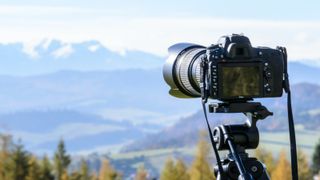
It's a great time to pick up one of the best cameras for creatives. With Black Friday and Cyber Monday fast approaching, retailers and manufacturers alike are falling over themselves to deliver the best deals on tech and gadgets – and that includes cameras. If you've been considering making the jump from smartphone photography to a dedicated camera, then let us help you find the right one.
- Black Friday 2021: When is it and what deals can we expect?
A proper camera gives you plenty of advantages over a smartphone, whether you're shooting stills, video, or a little of both. For one, smartphones are limited by the fact that they can only physically house a small sensor. Cameras can field larger ones, everything from 1-inch type to APS-C, full-frame and larger. This means that they can produce images with greater dynamic range (meaning the range of tonality in light and dark areas), and produce better images in low light. Large sensors also mean less image noise, meaning cleaner images at high resolutions.
If all the above got a bit technical for you, then don't worry – we've got a guide to what to consider when buying a camera at the bottom of this article, where we cut through some of the common jargon you'll encounter and explain the different types of camera available. Not sure whether you need a DSLR, mirrorless camera or compact? Definitely start there.
To make this guide easier to navigate, we've split it up into sections. First we've selected our favourite beginner cameras, then our picks of mid-range all-rounders for enthusiasts, and finally have selected a few pro-spec cameras suitable for expert photographers.
Want more beginner options? Check out our best cameras for beginners guide, and our guide to the best point-and-shoot cameras, both of which are focused on cameras that anybody can pick up and use. But for now, let's jump into the best cameras you can buy right now.
The best cameras available now
For beginners
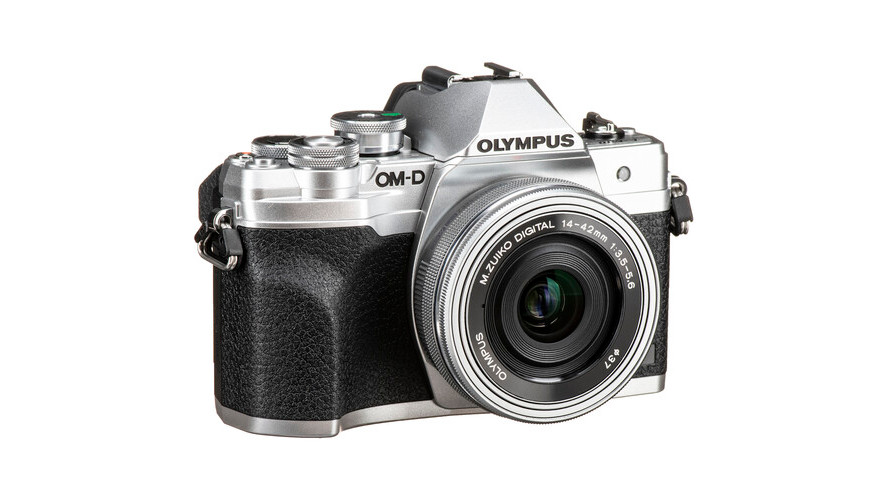
01. Olympus OM-D E-M10 Mark IV
The best mirrorless camera for beginners
Specifications
Type: Mirrorless
Sensor size: Four Thirds
Resolution: 20.3MP
Lens mount: Micro Four Thirds
Monitor: 3-inch tilting touchscreen, 1,040,000 dots
Viewfinder: EVF, 2,360,000 dots
Continuous shooting: 5fps
Movies: 4K UHD at 30p
User level: Beginner
Reasons to buy
+Gorgeous build and feel +Useful beginner modes... +... with room to grow
Reasons to avoid
-Only 5fps burst
For beginners, the Olympus OM-D E-M10 Mark IV is one of the best camera purchases you can make right now. It's super easy to use, but has powerful image-making capabilities, and offers real, satisfying room to grow and learn about its various functions. The 20MP Live MOS sensor is a Micro Four Thirds type, which is on the small side, but still represents a decent jump from a smartphone. What's more, the MFT lens mount gives you access to a huge stable of lenses, as you can use Panasonic-made optics as well as Olympus'.
The E-M10 Mark IV boasts such sophisticated gestures as 5-axis image stabilisation, which makes it possible to shoot hand-held with slower shutter speeds and still produce sharp, blur-free images. The high-ISO performance of the E-M10 Mark IV is also very impressive, meaning it acquits itself well in low light.
You also get 4K UHD video, a stylish retro-styled body, and a sensible control layout that's intuitive to pick up and use. The E-M10 Mark IV is light and nippy, an ideal camera for travel, and if you're a starting-out photographer or videographer, we feel very confident about recommending it.
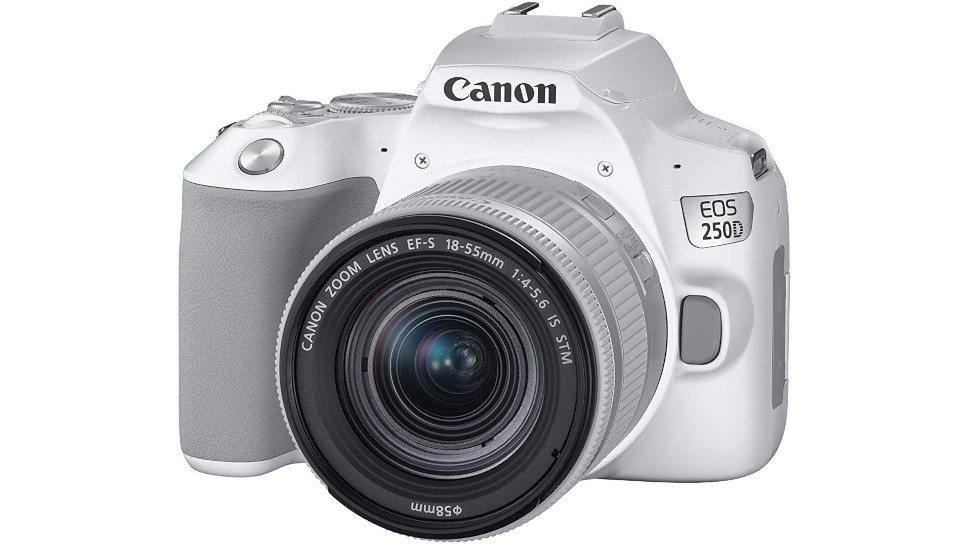
02. Canon EOS Rebel SL3 / EOS 250D
The best entry-level DSLR around gets updated with 4K video
Specifications
Type: DSLR
Sensor size: APS-C
Resolution: 24.1MP
Lens mount: Canon EF-S
Monitor: 3-inch tilting touchscreen, 1,040,000K dots
Viewfinder: Yes, optical
Continuous shooting: 5fps
Movies: 4K UHD at 25p
User level: Beginner
Reasons to buy
+Great choice for students +Massive lens range +Tiny, light body
Reasons to avoid
-Mirrorless rivals offer stronger specs
While some consider DSLRs to be a little old-fashioned, preferring to look at mirrorless cameras for the most exciting developments in imaging technology, there are still loads of fantastic DSLRs out there. Case in point, the Canon EOS 250D, which is one of the best beginner cameras around.
One real advantage of DSLRs like this is the lens selection. Canon's EF lens range has been in business for years, and there is simply a staggering variety of lenses to choose from. Lenses made decades ago will fit and function with this modern camera – how cool is that? The APS-C sensor on this camera is also a good size (larger than that of the Olympus E-M10 IV), and the EOS 250D is easy for newbies to get to grips with. It even includes 4K video, which is a welcome addition to a camera at this price point.
You can grab it as a body-only option, although most people just getting started will no doubt want to spend a shade more to pair it with the EF-S 18-55mm f/4-5.6 IS STM lens. If you're feeling adventurous, you can even opt for a kit with the all-encompassing EF-S 18-135mm f/3.5-5.6 IS STM instead, and if you fancy something similar but with a bit more powerful, take a look at the Canon EOS 90D, which has a more solid construction and better-suited to experienced photographers.
For enthusiasts
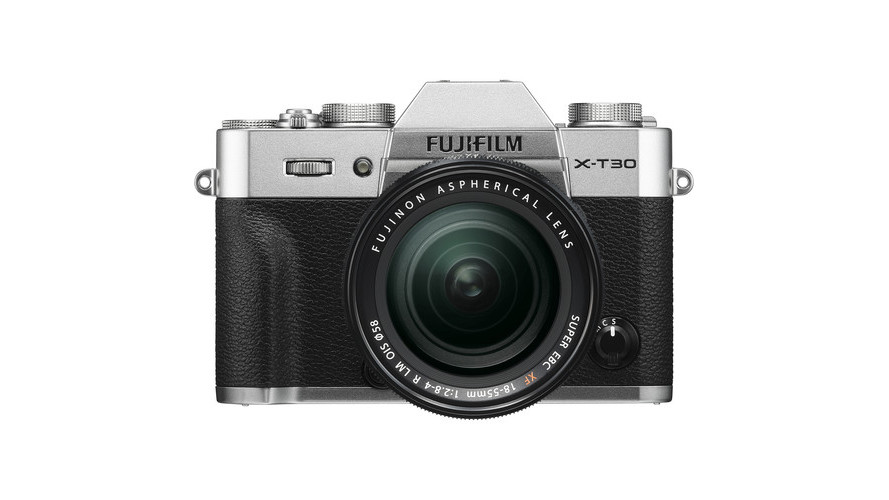
03. Fujifilm X-T30
One of the best all-rounder cameras ever made
Specifications
Type: Mirrorless
Sensor size: APS-C
Resolution: 26.1MP
Lens mount: Fujifilm X
Monitor: 3-inch tilting touchscreen, 1,040,000 dots
Viewfinder: EVF, 2,360,000 dots
Continuous shooting: 8fps (20fps with electronic shutter)
Movies: 4K UHD and DCI at 30p
User level: Beginner to intermediate
Reasons to buy
+Gorgeous JPEGs +Snappy, reliable AF
Reasons to avoid
-10-minute limit for 4K -No weather sealing
The Fujifilm X-T30 is still, a couple of years down the line from release, one of the best mid-range all-rounder cameras ever made. Fujifilm got absolutely loads right here, packing the sophisticated X-Trans sensor of the then-flagship X-T3 into a smaller lighter body. All the benefit, less of the bulk!
Fujifilm's X cameras are especially good for those who have little or no inclination to spend a lot of time fiddling around in Lightroom or any other editing program. The default JPEGs from the X-T30 look absolutely lovely, crisp and full of detail, and there are also Fujifilm's famous film simulation modes to play with, allowing you to simulate the feel of classic analog emulsions.
While the X-T30 does shoot video, it isn't much cop as a purely video camera; it has a vicious 10-minute time limit for shooting 4K, and having a screen that's tilted rather than fully articulated makes the camera less flexible in use. If you want a Fujifilm camera for video, check out the Fujifilm X-H1 or X-S10. For sublime stills captured with pin-sharp X-series lenses, stick with the superb X-T30.
Note: Fujifilm has released a very, very minor update to this camera in the form of the X-T30 II. It inherits some autofocus improvements from the X-T4, a new film simulation mode, and it does up to 10-minute 4K cap to 30 minutes. It's a minor enough upgrade that we're sticking with the X-T30 as our recommendation, as you'll likely be able to get a better price for what is basically the same camera.
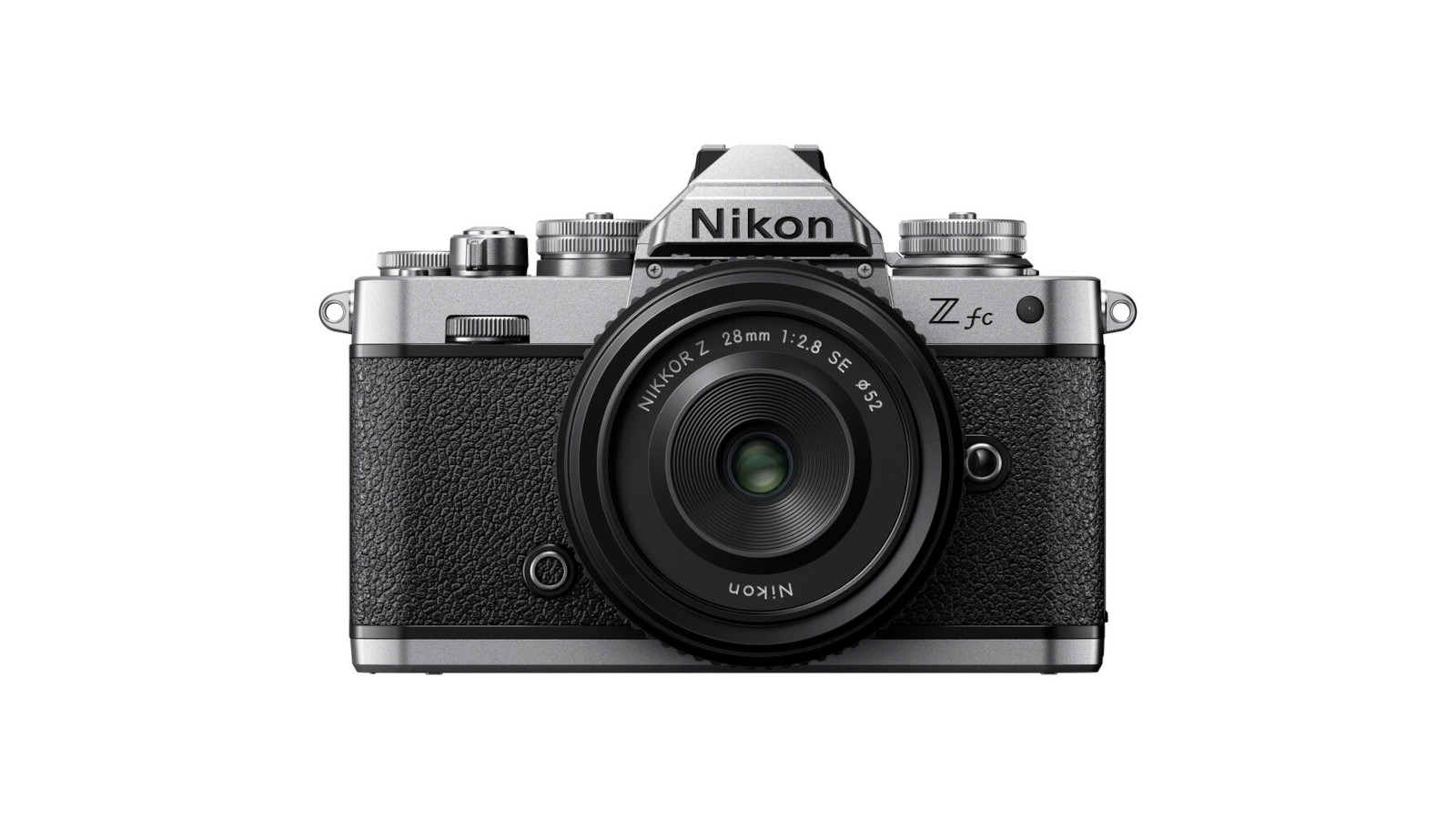
04. Nikon Z fc
Nikon's new mirrorless on the block is styled with retro cool
Specifications
Type: Mirrorless
Sensor size: APS-C
Resolution: 20.9MP
Lens: Nikon Z
Monitor: 3-inch vari-angle touchscreen, 1,040,000ots
Viewfinder: EVF
Max burst speed: 11fps
Movies: 4K
User level: Enthusiast
Reasons to buy
+Great handling and looks +Handy vari-angle display
Reasons to avoid
-Only takes UHS-I cards -Few DX-format Z lenses
The Nikon Z series of mirrorless cameras has mostly been full-frame up to this point, the only exception being the relatively straightforward Z50. The exciting new kid on the block is the Nikon Z fc, an APS-C mirrorless camera styled after the film SLRs of yesteryear. It's retro on the outside and cutting-edge on the inside, with 11fps burst shooting, 4K 30p video, a 2.36 million-dot electronic viewfinder, and more.
Nikon's latest hybrid autofocus system makes this a fast and capable camera for most situations. A few cutbacks have been made to keep the price low: there's no image stabilisation in body, and the chassis isn't weather sealed, so you'll want to keep it out of the rain. All this is kind of fair enough, though some users may bemoan the lack of UHS-II card support.
It's also worth bearing in mind that there aren't very many DX-format (APS-C) lenses for the Z system... yet. This is a problem that will correct itself as the system expands, but for now you are quite limited in your choices. Despite its retro looks, the Nikon Z fc is a future-facing camera, and is an exciting choice for enthusiasts who want to get in on the ground floor.
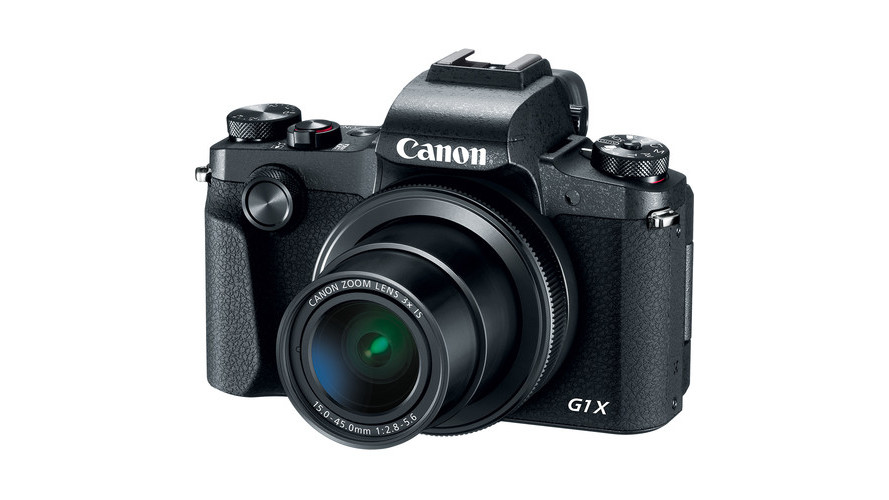
05. Canon PowerShot G1 X Mark III
One of the best compact cameras for serious enthusiasts
Specifications
Type: Mirrorless
Sensor size: APS-C
Resolution: 24.2MP
Lens: 24-72mm equivalent f/2.8-5.6
Monitor: 3-inch vari-angle touchscreen, 1,040,000 dots
Viewfinder: EVF, 2,360,000 dots
Max burst speed: 9fps
Movies: Full HD
User level: Enthusiast
Reasons to buy
+Superb image quality +Small and weather sealed
Reasons to avoid
-Limited zoom lens -200-shot battery
Many serious enthusiast photographer disdain compact cameras owing to the fact that they tend to have smaller sensors. This means less dynamic range, poorer low light performance, and overall worse image quality than most interchangeable-lens cameras. The Canon PowerShot G1 X Mark III, however, is a different story. This pocketable shooter packs in an APS-C sensor, the size that's often found on enthusiast DSLRs and mirrorless cameras. It makes the most of it too, producing beautiful image quality and hugely impressive Full HD video (though no 4K).
The body of the G1 X Mark III may be small, but in an impressive touch, it's weather sealed, making for a highly capable outdoor camera for shoots that take you into challenging conditions. Having a high-quality electronic viewfinder too is a great touch, and cements the status of the G1 X Mark III as a camera for enthusiasts.
The one main drawback is that the lens is pretty limiting, with an equivalent focal range of 24-72mm and a maximum aperture range of f/2.8-5.6. Neither of these specs are bad per se, but if you're aiming to capture distant subjects, shoot in low light, or produce images with a shallow depth of field, you may find yourself struggling.
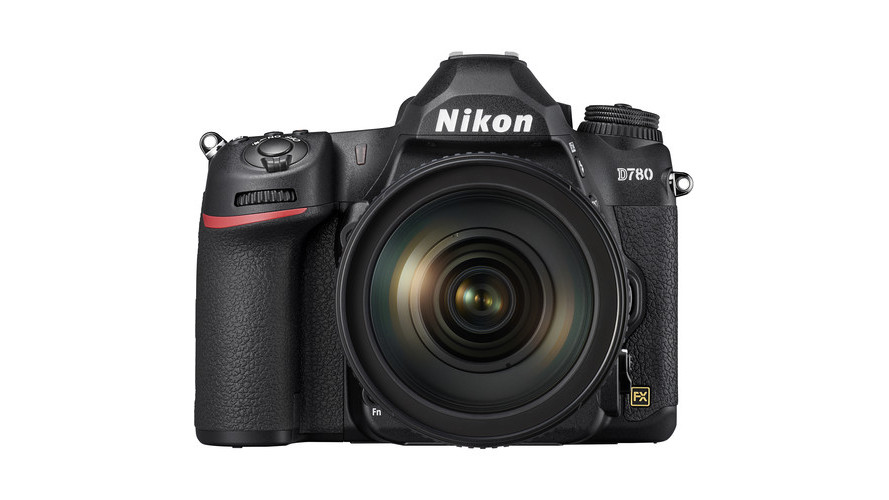
06. Nikon D780
A newer DSLR for serious photographers
Specifications
Type: DSLR
Sensor: Full frame
Megapixels: 24.4MP
Monitor: 3.2-inch, 2359k-dot tilting touchscreen
Viewfinder: Optical
Max burst speed: 7fps (viewfinder), 12fps (live view)
Movies: 4K
User level: Enthusiast
Reasons to buy
+Excellent 4K video +Dual UHS-II card slots
Reasons to avoid
-Relatively expensive (new) -Chunky design
Nikon proved the DSLR was well and truly alive and kicking with its 2020 release, the D780. A mid-range full-frame DSLR, this camera has that rugged, chunky handling that DSLR photographers love, but also packs in loads of great features cribbed from mirrorless cameras, making it a superb combination of the two. And access to the incredible stable of F-mount lenses is the icing on the cake that makes the D780 a truly tempting choice for creatives looking for a camera with real versatility to it.
It's designed to handle both stills and movies with aplomb, producing uncropped 4K video that's downsampled from 6K capture. If your work involves video content in any way, this is a superb choice of camera; if it doesn't, consider the lower-priced Nikon D750 which is a great low-cost full-frame DSLR that is still in production.
The D780 borrows a few top-of-the-line features from its more expensive siblings, including the 180k RGB metering and scene recognition system from the D850 above, so you can be sure you are still getting plenty of bang for your buck. As it's a DSLR, the body is unavoidably large, so those who want a more portable system will want to consider one of the mirrorless or compact options on our list.
For experts
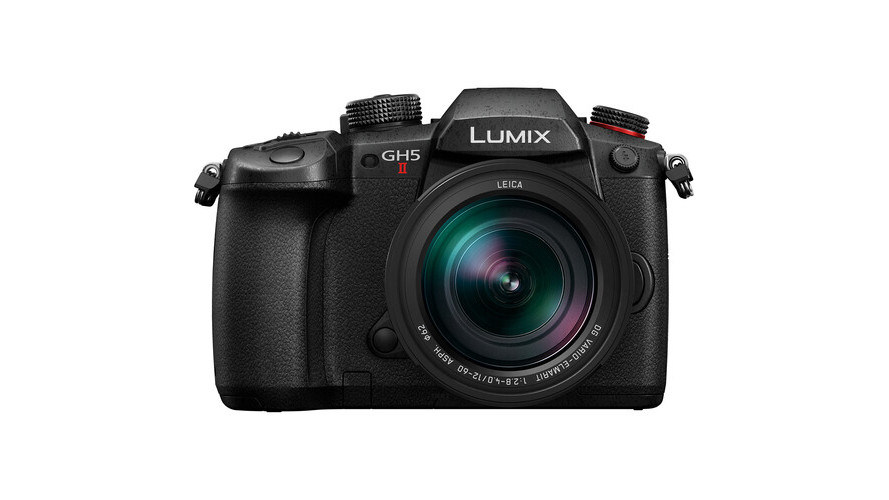
07. Panasonic Lumix GH5 II
The best 4K camera for video and filmmaking gets a refresh
Specifications
Type: Mirrorless
Sensor size: Micro Four Thirds
Resolution: 20.3MP
Lens mount: Micro Four Thirds
Viewfinder: EVF
Monitor: 3-inch vari-angle display, 1,840,000 dots
Max burst speed: 12fps
Movies: 4K
User: Expert
Reasons to buy
+Excellent video control +6.5-stop stabilisation +Large stills buffer
Reasons to avoid
-Sensor struggles in low light
The original Panasonic Lumix GH5 was one of the most highly regarded consumer video cameras around. Panasonic has given it a quick, light, 2021 refresh in the form of the GH5 II, and while it doesn't reinvent the wheel, it does make another compelling argument for being one of the best, most cost-effective video cameras you can get right now.
Producing pristine 4K video, the GH5 II offers 60p video capability, the V-Log L profile, VFR (Variable Frame Rates), 10-bit internal recording and more. It's no slouch with stills either; while 20MP might be a little limiting for some, the GH5 II can shoot at up to 12fps and has a big stills buffer capacity. The headline specs might not be the highest around, but in truth the GH5 II is one of the most capable all-rounders available right now.
The GH5 II uses the Micro Four Thirds sensor and lens mount. This means there are a huge number of lenses to choose from, with the ability to use Olympus lenses as well as Panasonic. The sensor is smaller than full-frame or APS-C, which some will turn up their noses at, but the GH5 II provides many features to compensate, such as 6.5-stop image stabilisation. This is a powerful camera, especially for hybrid photo/video content creators.
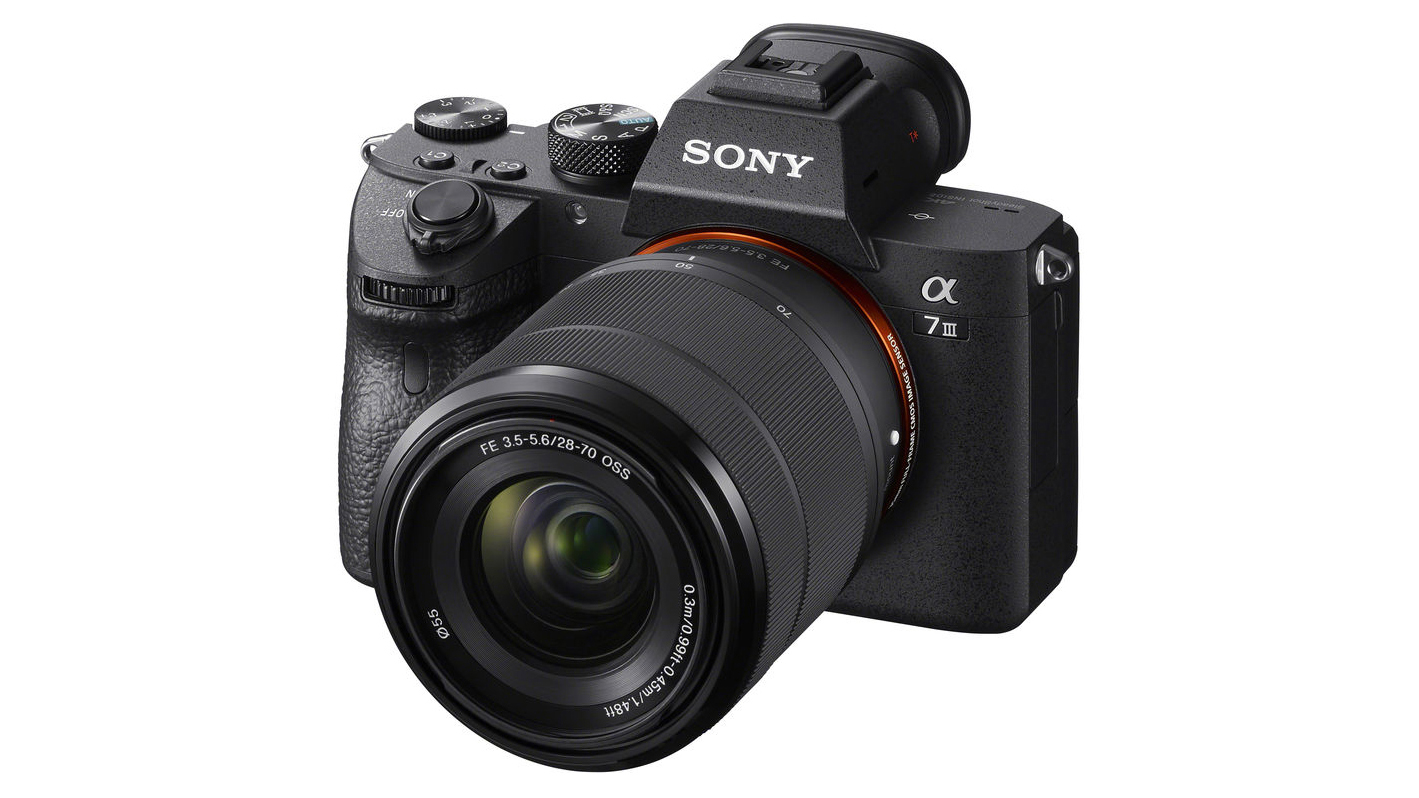
08. Sony Alpha A7 III
A near-perfect mirrorless balance between performance, features and price
Specifications
Type: Mirrorless
Sensor: Full-frame
Megapixels: 24.2MP
Lens mount: Sony E-mount
Monitor: 3in tilting touchscreen, 921k dots
Viewfinder: EVF, 2.36m dots
Max burst speed: 10fps
Movies: 4K
User level: Enthusiast
Reasons to buy
+Great battery life (for mirrorless) +Top-quality images
Reasons to avoid
-Lens range still somewhat restrictive -Mark II now almost half the price
Just as Nikon's D850 quickly became the DSLR that everyone wanted to switch to, Sony's A7 III has mirrorless users saving up their pennies. While many models have their specific focus and target audience, the A7 III really is a camera for all. A 24MP full-frame sensor, hybrid AF system that covers a staggering 93 per cent of the frame and 4K video from oversampled footage are just a sliver of the highlights. Sony has focused on the details too, installing the useful AF joystick that found fans on previous models, and boosting battery life to a very respectable (by mirrorless standards) 710 frames.
The A7 III is a great all-rounder, with a versatile feature-set that makes it a great fit for a range of applications, but the older Sony A7 II is still very much on a sale and worth considering if you fancy something more keenly priced. Either way, grab it with the FE 28-70mm F3.5-5.6 OSS if you're just getting started, unless you already own a lens or two.
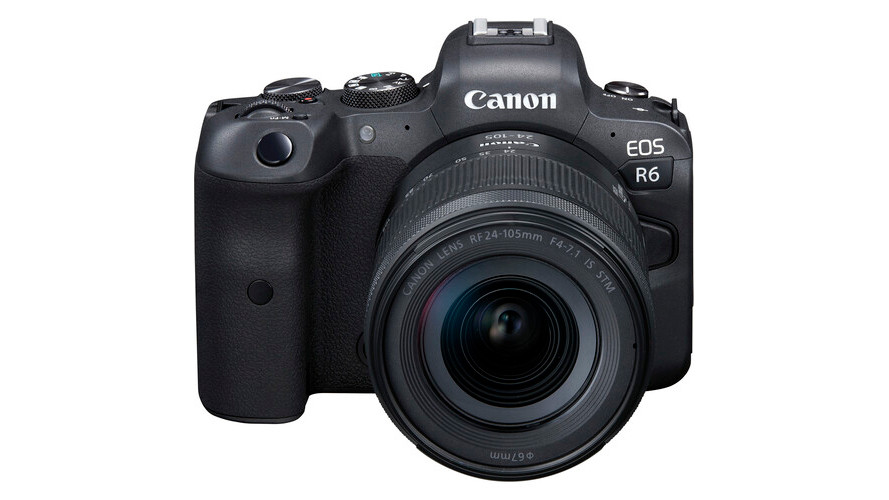
09. Canon EOS R6
The best balance of features and price, the EOS R6 is a near-perfect all-rounder
Specifications
Type: Mirrorless
Sensor size: Full frame
Resolution: 20.1MP
Lens: Canon RF
Monitor: 3-inch fully articulating touch display, 1,620,000 dots
Viewfinder: 0.5-inch OLED EVF, 3,690,000 dots, 100% coverage, 0.76x magnification, 120fps refresh rate
Max burst speed: 12fps mechanical shutter, 20fps electronic shutter
Movies: 4K UHD
User level: Enthusiast/expert
Reasons to buy
+Exceptional autofocus +Does basically everything well
Reasons to avoid
-Pretty expensive -Only 20.1MP
Though it isn't the super-star headline-grabber of the EOS R series (that honour belongs to the EOS R5), we reckon the Canon EOS R6 is the best all-around camera you can buy right now. A superbly speedy machine, it takes full advantage of the sophisticated RF lens mount to deliver lightning-fast autofocus, with exceptional communication between camera and lens.
With twin card slots and some of the best in-body stabilisation in the business, the Canon EOS R6 ticks pretty much all the boxes for any working professional or enthusiast photographer. It lacks the 8K video and 45MP resolution of the EOS R5, meaning it's a substantial cost-saving for those who don't need such things. One could argue that 20.1MP is perhaps a smidge too low, but as long as you aren't committed to making huge prints of all of your images, this should be more than enough for most purposes.
Lightweight, snappy and sophisticated, the Canon EOS R6 is on the cutting edge of photo technology. We can't wait to see what comes next!
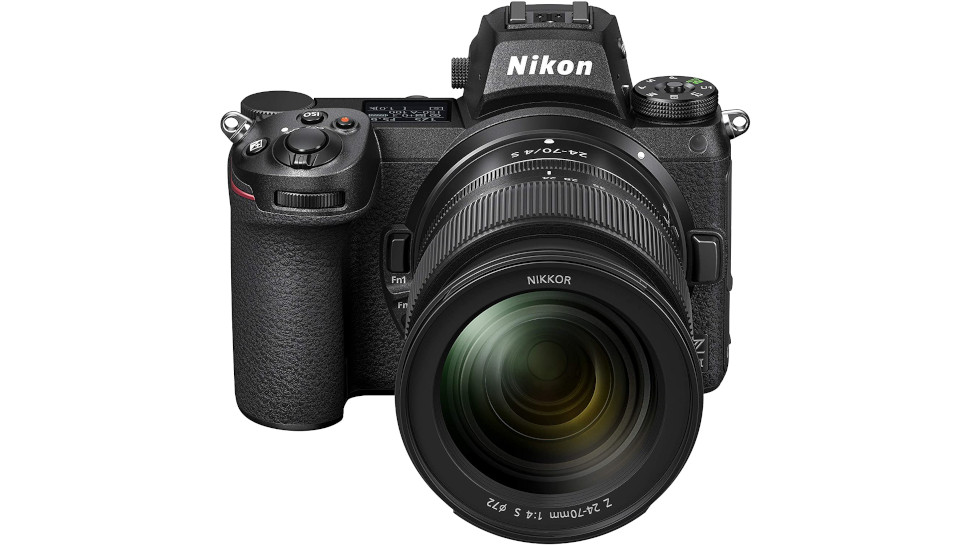
10. Nikon Z7 II
The flagship full-frame mirrorless from Nikon, one of the best professional cameras
Specifications
Type: Mirrorless
Sensor size: Full frame
Resolution: 45.7MP
Lens mount: Nikon Z
Viewfinder: EVF
Monitor: 3.2-inch tilting touchscreen, 2,100,000 dots
Max burst speed: 10fps
Movies: 4K UHD
User: Expert
Reasons to buy
+Superb images +More affordable than rivals
Reasons to avoid
-Display not vari-angle -So-so electronic viewfinder
The flagship full-frame mirrorless camera from Nikon, the Z7 II, is designed to woo photographers who might have been swayed by showboaty mirrorless models from Canon and Sony. So it's got similar specs to the likes of the EOS R5 or A7R IV, with 45MP of resolution, speedy burst shooting and high-quality 4K video. It may not have headline-grabbing specs like 8K video, but it is more affordable than its rivals in the same class.
Overall, the Nikon Z7 II is a very impressive all-around package. It handles like a dream and produces images that look seriously impressive. Any pro or serious enthusiast photographer will find this camera does everything they could need and more, and does so with welcome extras like an upgraded battery that lasts longer compared to the original Z7. Dual card slots too! Very nice.
Any negatives? The monitoring situation is a little disappointing, with an LCD screen that only tilts and isn't fully articulated, and an EVF that's lower resolution than some rival cameras. None of this is deal-breaking though, and if you're looking for a full-frame mirrorless system to jump into, Nikon's Z series is definitely worth considering.
The best camera: What to consider
When determining which is the right camera for you, one of the first things to suss out is which type you want to use. Consumer cameras can be broadly divided into two categories. There are further sub-categories of course, which we'll get to, but right off the bat, it's a good idea to decide whether you want:
A compact camera. This term refers to cameras that have a fixed lens on their front, which can't be changed. The focal length/range and maximum aperture settings that are listed on the box are all you're getting. While this does restrict versatility, it is simpler and more convenient, and tends to make the camera more affordable. While many compacts are oriented towards beginners, there are plenty of premium compacts for more advanced users.
An interchangeable-lens camera. These cameras have a lens mount that allows you to swap lenses at will, provided they fit of course. Having to buy lenses as well as a camera body does drive the cost up, but you gain an immense amount of flexibility, and the ability to use lenses with specialist focal lengths (such as super-telephotos or fisheyes) and larger maximum apertures.
Interchangeable lens cameras comes in two main types, which are as follows:
DSLRs. These are the direct successors of film SLRs, and the acronym stands for digital single-lens reflex camera. They are bulkier and heavier than other types of camera, but also tend to be hardier and more weatherproof. They also contain an internal mirror system that allows for the fielding of an optical viewfinder, meaning you can press your eye to the camera and see exactly what you're shooting. The main manufacturers of DSLRs are Canon and Nikon.
Mirrorless cameras. As the name implies, these cameras forgo the mirror system of a DSLR. This means no optical viewfinder, but allows the body to be smaller and lighter. Plus, most now field electronic viewfinders that are virtually lag-free. Mirrorless cameras are where the most exciting advancements in camera technology are happening, especially in terms of video. They run the gamut from entry-level to high-end professional.
When considering which type and model of camera is right for you, it's worth considering what you want to shoot with it, as this will help you narrow down which specs are important and which are not. Do you need fast burst speeds for capturing fast action? Do you require weather sealing for outdoor shooting? Do you like the sound of a convenient, portable compact, or does the versatility of being able to invest in a lens system sound more like your speed?
In the guide above, we've listed all the key specs and main pros and cons of each camera we've picked, as well as the price, to help guide you to the right camera for you.
The best cameras: frequently asked questions
Which camera sensor is best?
When shopping for cameras, you'll see plenty of mentions of sensor size. What's the difference and why does it matter?
Sensor size is an important metric in the world of cameras. Cheap cameras and smartphones will have smaller sensors, while professional cameras will have larger ones. Why does it matter?
It's not about resolution per se, but rather to do with the size of the pixels on the sensor. A 16-million-pixel sensor that's a 1/2.3-inch type (commonly found on smartphones) will have smaller, crammed-in pixels, compared to a 16-million-pixel full-frame sensor, which is the type found on professional cameras, and is considerably larger. This means a noisier image, especially in low light.
Smaller sensors also incur what's called a "crop factor", meaning they narrow the effective focal length of a lens. For example, APS-C sensors have a 1.5x crop factor compared to full-frame, meaning they increase the focal length of a lens by about 1.5x. A 50mm lens mounted to an APS-C camera will behave like a 75mm lens. This can be quite useful, as it allows you to get closer to a subject without having to shell out for expensive telephoto lenses.
Large-sensor cameras have their advantages, and will produce generally better images and videos, but they are bulkier and more expensive than small-sensor camera. It's all about weighing up your needs and your budget.
Which camera do YouTubers use?
Here's what you need for starting your own YouTube channel.
If you're looking for a good YouTube camera, then it's worth taking a careful look at the video specs. You'll want to think about things you may not consider when looking for a photography camera: does it have an input socket for a mic? Can it live-stream? How is the video autofocus?
One of the most popular cameras among YouTubers is the Canon PowerShot G7 X Mark III, a capable compact that does everything video users need, for a competitive price. Check out our guide to the best cameras for YouTube where we have plenty more choices.
What camera lens do I need?
The camera is only half the equation! Which lenses are best depends on what you plan to shoot.
If you've bought an interchangeable-lens camera like a DSLR or a mirrorless camera, then you'll be faced with the question of which lenses to buy. As there's a huge amount of choice here, it's worth thinking about what you need before you buy.
Wide-angle lenses (8-35mm) are great for landscapes and architecture, as they fit a lot into the frame and exaggerate lines for visually striking effects.
Standard lenses (35-70mm) are good for street and day-to-day shooting, as they provide a naturalistic perspective.
Telephoto lenses (more than 70mm) are good for wildlife and action, and any kind of shooting where you can't get close to your subject. Short telephotos (around 85mm) are also good for portraiture, as they provide a flattering perspective for your subjects.
There's also the question of zooms and primes. While zoom lenses provide much greater versatility and allow you to experiment with different perspectives, prime lenses (that is, lenses with a single fixed focal length) offer much greater optical quality, resulting in sharper images.
Also read:
- The best cameras for vlogging
- Best memory cards
- The best monitors for photo editing

Jon is a freelance writer and journalist who covers photography, art, technology, and the intersection of all three. Interests include old film cameras, new digital gadgets, and pounding the pavements of London looking for fresh photo opportunities. If he finds any, he will let you know.
Related articles
Best Camera For Fine Art Photography
Source: https://www.creativebloq.com/features/best-camera
Posted by: simmonsshavinicaut.blogspot.com

0 Response to "Best Camera For Fine Art Photography"
Post a Comment